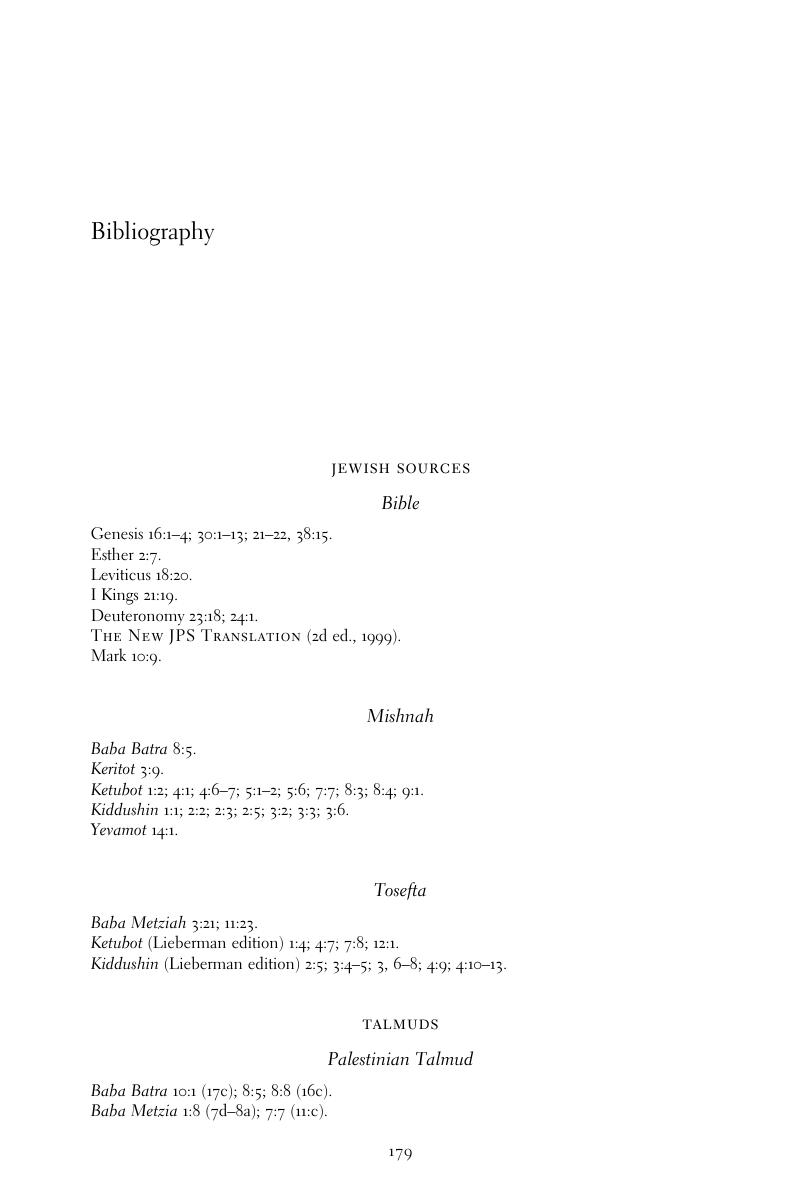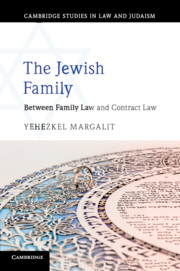Book contents
- The Jewish Family
- Cambridge Studies in Law and Judaism
- The Jewish Family
- Copyright page
- Contents
- Preface
- Acknowledgments
- Introduction
- 1 Regulating Marital Relations between Spouses by Consent
- 2 “Freedom of Contract” in Jewish Family Law – The Differences between the Babylonian and Palestinian Talmuds
- 3 Is There Really No Conditional Marriage?
- 4 Temporary Marriage – A Possible Solution to the Problem of the Agunah?
- 5 Toward Establishing Halakhic Parenthood by Agreement?
- Epilogue
- Bibliography
- Index
- References
Bibliography
Published online by Cambridge University Press: 15 December 2017
- The Jewish Family
- Cambridge Studies in Law and Judaism
- The Jewish Family
- Copyright page
- Contents
- Preface
- Acknowledgments
- Introduction
- 1 Regulating Marital Relations between Spouses by Consent
- 2 “Freedom of Contract” in Jewish Family Law – The Differences between the Babylonian and Palestinian Talmuds
- 3 Is There Really No Conditional Marriage?
- 4 Temporary Marriage – A Possible Solution to the Problem of the Agunah?
- 5 Toward Establishing Halakhic Parenthood by Agreement?
- Epilogue
- Bibliography
- Index
- References
Summary

- Type
- Chapter
- Information
- The Jewish FamilyBetween Family Law and Contract Law, pp. 179 - 208Publisher: Cambridge University PressPrint publication year: 2018



